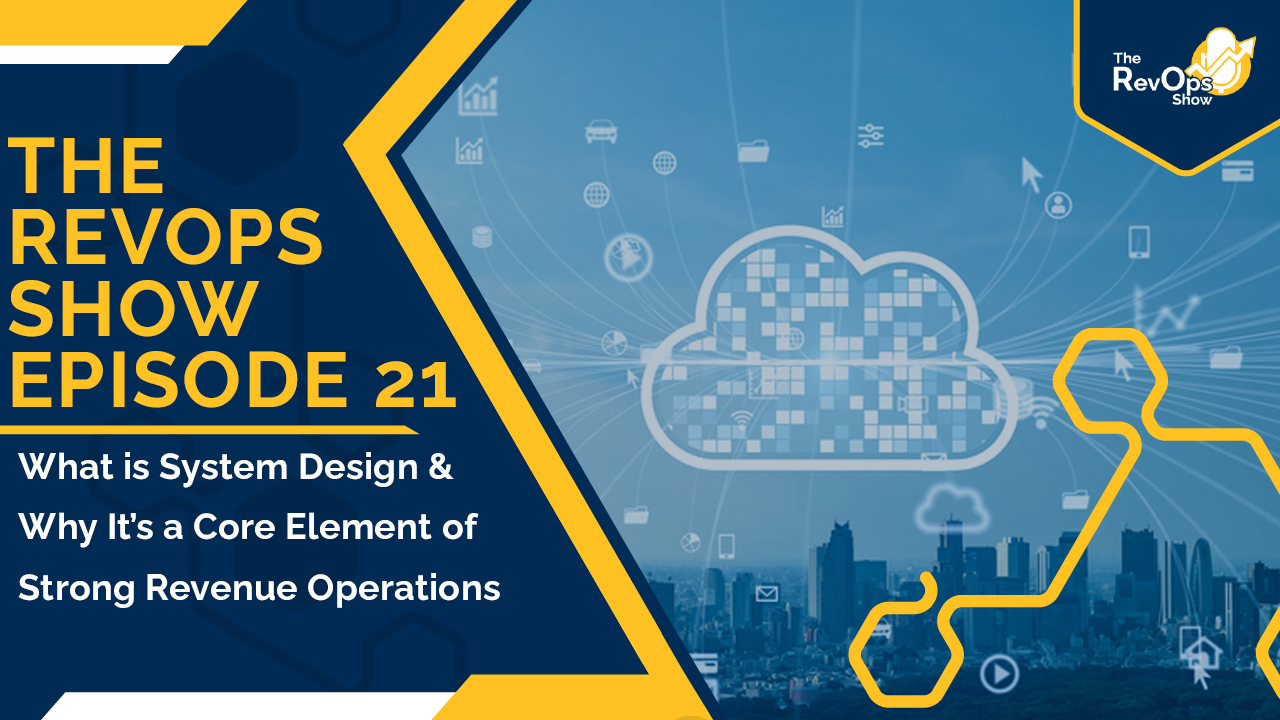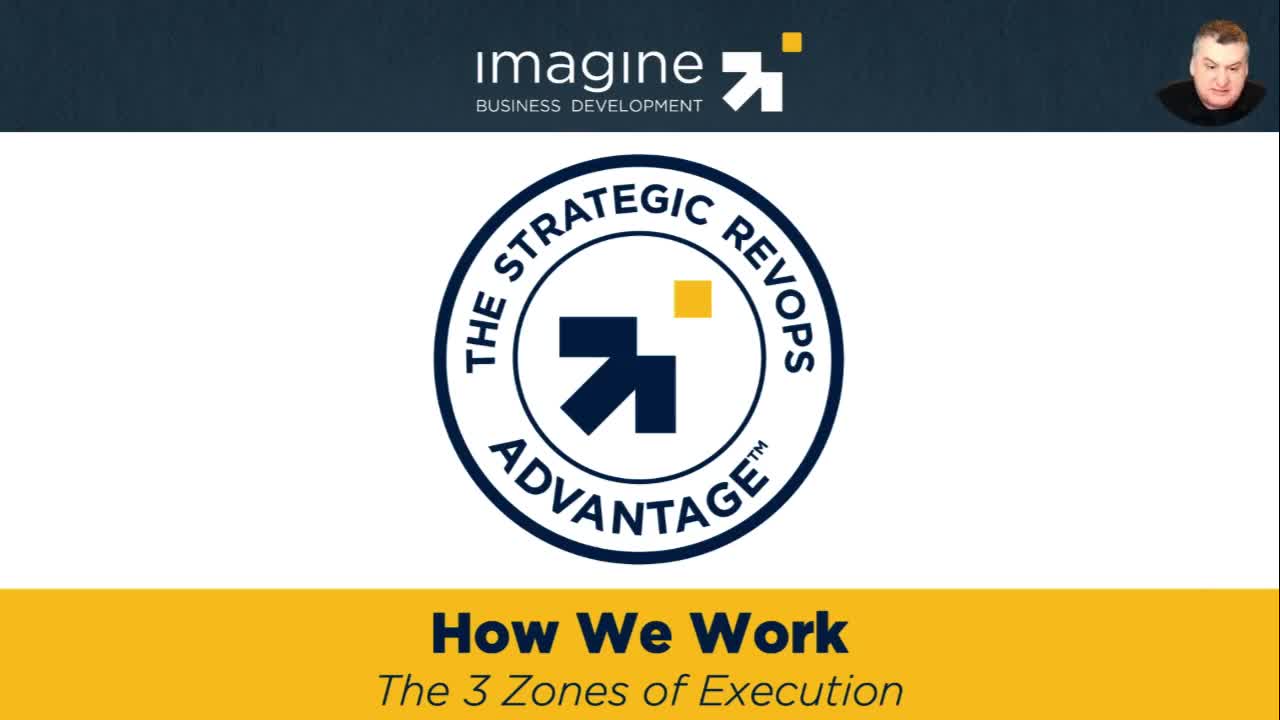There must be good karma on our side this episode because everyone is in a positive mindset. Opening day happened last week, Jess was mentioned in a share of one of our previous episodes, and we closed business! I can’t see any reason to not be happy about those things! But like always none of these things are what we’re here to focus on. Today Jess wants to talk about system design and of course Doug is 100% focused, locked in, and ready to go…maybe!
Audio:
Video:

Additional Resources:
- [Blog] What Is System Design & Why It's Crucial For Smart Growth
- The Revenue Acceleration Framework™
- [Webinar] How to Successfully Launch & Integrate RevOps
- [Video] The 3 Zones of Execution
Show Notes:
What is system design? How would you explain it?
Doug was asked this question from someone on LinkedIn after watching our webinar on setting up and structuring for successful RevOps, and it hit him that talking about system design in a way that fits into a single podcast is harder than he thought. Let’s start with the global element. System design comes from design theory. System Design is the approach to understand design and systemize the flow of value from various aspects of an organization through the value chain to ensure synchronicity, consistency, integration, and maximization. So basically system design is everything; bringing everything into account.
In The Revenue Acceleration Framework™, we talk about the second level being structure and system design is the embodiment of structure. It’s an ongoing process; it’s the process of making ongoing trade offs and adjustments necessary to align all vectors. All your elements of what’s involved to generate motion, to align all vectors, to maximize value creation within.
Where people fall off key is they think about design for the perfect world with no restrictions. Rather you should seek to understand. The other element that people have a tendency to do is they look at constraints as bad, but having no constraints means you have no direction. It’s having an understanding that while you’re executing, you’re never the company you want to be and you have to learn how to be okay with that. System design is the structure; the invisible hand that drives everything. That’s why documenting your business process is so important.
Why is it important though? Why do we always go back to system design?
Why is oxygen important? Doug had a coach who said you’re always either a part of your system or someone else’s. You can be the windshield or you can be the bug. Fundamentally there are three systems: your system, their system, and no system. No system is anarchy and chaos.
A mantra that Doug has lived by is that your competition is irrelevant. That doesn’t mean that your competition doesn’t matter, it means it’s irrelevant because if you view the world through the lens of your competitor, then you’re playing their game. Rather, play your game because if you play your game, you can beat your opponent. Yet, if you play their game, they will beat you.
System design is establishing the game and it sets the rules that you play by. Without system design it’s like playing UNO with your two-year-old daughter. You think after a few times you’re eventually going to pick up a pattern of what she’s going to do and you can’t. Doug is good at pattern recognition and he could not figure out a pattern, so whenever he was playing UNO with his daughter, he was playing her game. He was in her system. It’s understanding the game; it’s being able to make better decisions; to ask better questions.
Where do you start with system design?
Here. You don’t have to worry about starting design because it’s happening now. You’re making choices, you’re making decisions. Your system is perfectly designed to produce the results that you’re getting. You’re designing your system every day. You’re making trade-offs every day whether you realize it or not.
We talk about the 3 Zones of Execution and the most important question you can answer is, “What are you not going to focus on?” What elements are you going to ignore right now? You can’t begin to create the space to work on something until you accept the fact that you’re not going to work on other things. The 3 Zones of Execution says, “What’s the next 90 days?” That’s all about the results and the objectives that we need to hit.

Start somewhere. Put the list of all the critical things that are going on and then ask the question - if you can only focus on one thing, which one thing would have the biggest impact on all other things? That’s where you start.
What are some of the biggest challenges that you run into? Where are places that people get stuck?
When people start to find messes and begin to get frustrated, that’s the first place where your natural approach is to flinch with your breaks and as a result you change what you’re going. The purpose is to find all of those messes. Managing expectations is a place where you can emphasize to help with the messiness.
You have to realize that you’re never in your ideal state, you’re never the company you want to be. We have to accept and understand progress, especially in the early stages because when you start making progress, you get really upset. Why? Because you learn a lot about what’s wrong and it feels like you’re falling backwards. What frees up system design is comfort with uncertainty. What clogs it is the desire for certainty.
Jess’s big takeaways today are that system design provides the structure and maximizes value to help you manage the trade offs within the constraints of the system. It helps you to ask better questions which isn’t something that many people think about.
Next Steps:
-
Follow Jess, Doug & Imagine on socials for updates on the show or other insights:
-
Subscribe to the show on Spotify & Apple Podcasts
-
Listen to Episode 22: Get in the Zone - The 3 Zones of Execution
